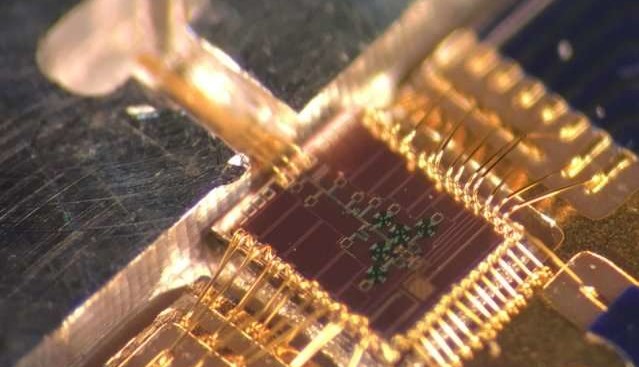Spinning molecules make accurate time base
July 17, 2018
on
on

Researchers at MIT have developed a molecular clock which derives its accuracy from the precise rotation of molecules. The molecules are illuminated by an RF source and energy absorption peaks at resonance. Such a chip could significantly improve the positional accuracy of terrestrial smart devices used for navigation.
The most accurate clocks we can currently build are atomic clocks. These are based on resonance of cesium atoms they can be built quite compact for use as the reference time base in navigation satellites such as GPS or GLONASS. Navigation devices or smart devices on the earth’s surface "triangulate" their position in space by comparing the time signals from at least three satellites.
Even the smallest atomic clocks are still too big for the average smart device and cost over $ 1000 each. A smartphone depends on its own internal clock and signals from at least three satellites in order to navigate but it can still make errors in positioning if signals are weak and accuracy of the internal clock is poor. Researchers at MIT's Electronics Engineering and Computer Science (EECS) and Terahertz Integrated Electronics Group have now come up with an on-chip solution that uses gaseous molecules instead of atoms. In experiments, the molecular clock has achieved an accuracy better than 1 microsecond per hour, which is almost comparable to miniature atomic clocks and a factor of 10,000 more stable than the crystal used in today’s smartphones. The chip can also be fabricated in CMOS technology and only consumes about 66 mW, which is significantly less than a typical GPS receiver chip for example. The super-constant rotational frequency of the carbonyl sulfide molecules turns out to be 231.060983 GHz.
More details are contained in an article in the journal Nature Electronics.
The most accurate clocks we can currently build are atomic clocks. These are based on resonance of cesium atoms they can be built quite compact for use as the reference time base in navigation satellites such as GPS or GLONASS. Navigation devices or smart devices on the earth’s surface "triangulate" their position in space by comparing the time signals from at least three satellites.
Even the smallest atomic clocks are still too big for the average smart device and cost over $ 1000 each. A smartphone depends on its own internal clock and signals from at least three satellites in order to navigate but it can still make errors in positioning if signals are weak and accuracy of the internal clock is poor. Researchers at MIT's Electronics Engineering and Computer Science (EECS) and Terahertz Integrated Electronics Group have now come up with an on-chip solution that uses gaseous molecules instead of atoms. In experiments, the molecular clock has achieved an accuracy better than 1 microsecond per hour, which is almost comparable to miniature atomic clocks and a factor of 10,000 more stable than the crystal used in today’s smartphones. The chip can also be fabricated in CMOS technology and only consumes about 66 mW, which is significantly less than a typical GPS receiver chip for example. The super-constant rotational frequency of the carbonyl sulfide molecules turns out to be 231.060983 GHz.
More details are contained in an article in the journal Nature Electronics.
Read full article
Hide full article


Discussion (0 comments)